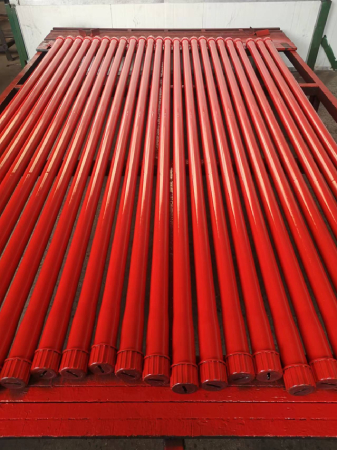- Afrikaans
- Albanian
- Amharic
- Arabic
- Armenian
- Azerbaijani
- Basque
- Belarusian
- Bengali
- Bosnian
- Bulgarian
- Catalan
- Cebuano
- Corsican
- Croatian
- Czech
- Danish
- Dutch
- English
- Esperanto
- Estonian
- Finnish
- French
- Frisian
- Galician
- Georgian
- German
- Greek
- Gujarati
- Haitian Creole
- hausa
- hawaiian
- Hebrew
- Hindi
- Miao
- Hungarian
- Icelandic
- igbo
- Indonesian
- irish
- Italian
- Japanese
- Javanese
- Kannada
- kazakh
- Khmer
- Rwandese
- Korean
- Kurdish
- Kyrgyz
- Lao
- Latin
- Latvian
- Lithuanian
- Luxembourgish
- Macedonian
- Malgashi
- Malay
- Malayalam
- Maltese
- Maori
- Marathi
- Mongolian
- Myanmar
- Nepali
- Norwegian
- Norwegian
- Occitan
- Pashto
- Persian
- Polish
- Portuguese
- Punjabi
- Romanian
- Russian
- Samoan
- Scottish Gaelic
- Serbian
- Sesotho
- Shona
- Sindhi
- Sinhala
- Slovak
- Slovenian
- Somali
- Spanish
- Sundanese
- Swahili
- Swedish
- Tagalog
- Tajik
- Tamil
- Tatar
- Telugu
- Thai
- Turkish
- Turkmen
- Ukrainian
- Urdu
- Uighur
- Uzbek
- Vietnamese
- Welsh
- Bantu
- Yiddish
- Yoruba
- Zulu
Innovative Approaches to Steel Coupling Design and Applications for Structural Integrity
Understanding Steel Coupling An Essential Component in Structural Engineering
Steel coupling refers to the use of steel connectors designed to join different structural sections together in a robust and reliable manner. In contemporary construction, these couplings play a critical role in ensuring the integrity of structures, providing essential support, and enabling effective load transfer between elements. This article delves into the significance, types, and applications of steel couplings in the field of structural engineering.
The Importance of Steel Coupling
In structural engineering, the integrity and stability of buildings and other constructions are of paramount importance. Steel couplings are pivotal because they facilitate the connection between various structural components, such as beams, columns, and slabs, thereby enhancing the overall strength of the structure. They allow for the efficient transfer of loads and can accommodate movement due to thermal expansion, settling, or seismic activity.
Steel couplings also offer numerous advantages over other materials. Their robustness ensures high tensile and compressive strength, making them ideal for heavy-duty applications. Additionally, steel's durability allows couplings to withstand extreme environmental conditions, which is crucial for outdoor constructions exposed to the elements.
Types of Steel Couplings
There are various types of steel couplings, each designed for specific applications
1. Rigid Couplings These provide a fixed connection between two structural members. Rigid couplings are usually employed in situations where precise alignment is critical, and no movement is expected.
steel coupling

2. Flexible Couplings These allow for some degree of movement and are designed to accommodate shifts caused by thermal expansion or settling. Flexible couplings are essential in seismic zones where structures must cope with dynamic forces.
3. Half-Moon or Half-Circular Couplings These are often used in pipe connections and allow for slight misalignments while maintaining a strong bond.
4. Bolted and Welded Couplings Bolted couplings are advantageous due to their ease of assembly and disassembly, making them suitable for applications where future modifications may be necessary. Welded couplings offer a permanent connection, ensuring maximum strength.
Applications of Steel Coupling
Steel couplings find applications across various sectors, including residential, commercial, and industrial buildings. In skyscrapers, these couplings ensure that the higher levels can withstand wind loads. In bridges, they play a crucial role in holding together precast segments and managing the stress from traffic loads.
Moreover, in the realm of machinery and equipment, steel couplings facilitate the connection of shafts in motors, pumps, and generators, ensuring the reliable transfer of torque and rotational force.
Conclusion
In summary, steel coupling is a vital component in structural engineering that ensures the safety and stability of constructions. As the demand for innovative designs and resilient structures continues to grow, the importance of reliable steel couplings cannot be overstated. They not only enhance the longevity of buildings but also contribute significantly to the overall efficiency of load distributions within frameworks. As technology advances, the development of more sophisticated steel coupling designs will undoubtedly play a crucial role in the future of construction.
-
Tubing Pup Joints: Essential Components for Oil and Gas OperationsNewsJul.10,2025
-
Pup Joints: Essential Components for Reliable Drilling OperationsNewsJul.10,2025
-
Pipe Couplings: Connecting Your World EfficientlyNewsJul.10,2025
-
Mastering Oilfield Operations with Quality Tubing and CasingNewsJul.10,2025
-
High-Quality Casing Couplings for Every NeedNewsJul.10,2025
-
Boost Your Drilling Efficiency with Premium Crossover Tools & Seating NipplesNewsJul.10,2025







